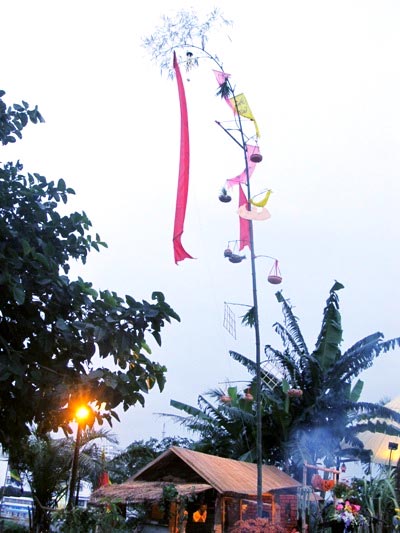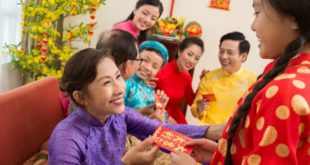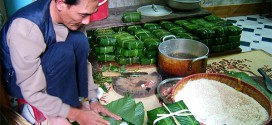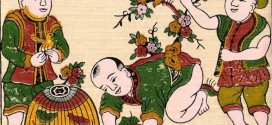In Vietnam, the Lunar New Year, known as Tet, is a time of colorful decorations, joyous celebrations, and cherished traditions. One of the most iconic symbols of Tet is the Vietnamese New Year Tree, locally known as “Cay Neu.” This magnificent tree holds deep cultural and spiritual significance, serving as a focal point for festive activities and symbolizing good luck and prosperity. Join us as we delve into the enchanting world of the Vietnamese New Year Tree and explore its traditions and symbolism.
The Origins of the Vietnamese New Year Tree
The practice of decorating a tree during Tet can be traced back to ancient times when the Vietnamese people believed in the spiritual connection between humans and nature. The Vietnamese New Year Tree, or Cay Neu, has its roots in the agricultural traditions of the country, where farmers would erect a tall bamboo pole at the entrance of their villages or homes. Over time, this simple bamboo pole transformed into an elaborate and beautifully decorated tree, symbolizing the connection between heaven and earth.
The Symbolism of Cay Neu
The Vietnamese New Year Tree is more than just a decorative element; it carries profound symbolism that represents the hopes and aspirations for the upcoming year. Here are some key aspects of its symbolism:
Warding Off Evil Spirits
The primary purpose of Cay Neu is to ward off evil spirits and bad luck, ensuring a fresh and prosperous start to the new year. The tree is believed to act as a spiritual barrier, preventing negative energy from entering homes and communities. It is traditionally placed at the entrance of houses, in gardens, or in communal areas.
Inviting Good Fortune and Blessings
Cay Neu is adorned with vibrant decorations, such as colorful ribbons, bells, and traditional ornaments. These embellishments are believed to attract good fortune and blessings from the deities and ancestors. Each decoration holds its unique symbolism, reflecting values like happiness, longevity, prosperity, and harmony.
Honoring Ancestors
The Vietnamese New Year Tree also pays homage to ancestors, serving as a connection between the living and the deceased. Families often hang small offerings, such as fruit, flowers, and burning incense, on the branches of the tree as a way to remember and honor their ancestors during the festive season.
The Ritual of Cay Neu
The preparation and raising of the Vietnamese New Year Tree is a cherished ritual that involves the whole community. Here are the key steps involved in the process:
Selecting and Decorating the Tree
A tall bamboo pole is carefully selected to serve as the trunk of the tree. Bamboo is chosen for its strength and resilience, symbolizing the endurance and determination of the Vietnamese people. The pole is adorned with various decorations, including colorful ribbons, paper flowers, and trinkets, which are meticulously tied to the branches.
Erecting the Tree
With great fanfare and excitement, the decorated bamboo pole is erected in a prominent location. It is usually placed at the entrance of a house or in a communal area, ensuring that it is visible to all. The act of raising the tree is accompanied by prayers, blessings, and traditional music to invoke good fortune for the community.
Maintaining the Tree
Throughout the Tet period, the Vietnamese New Year Tree is meticulously maintained to preserve its beauty and significance. Offerings are replenished, and incense is regularly burned to pay respects to the ancestors. The tree becomes a focal point for gathering, where families and friends come together to celebrate, exchange wishes, and partake in festive activities.
Embrace the Radiance of the Vietnamese New Year Tree
The Vietnamese New Year Tree, Cay Neu, embodies the spirit of Tet with its vibrant decorations, deep symbolism, and communal significance. It serves as a beacon of hope, protection, and prosperity, ushering in a new beginning filled with joy and abundance. As Tet approaches, let us embrace the radiance of the Vietnamese New Year Tree and partake in the joyous festivities that bring communities together in celebration.
 Vietnamese Culture and Tradition
Vietnamese Culture and Tradition 



